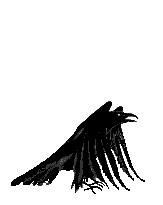
Katja Seib’s the crow marks the second presentation in HOMEWORK, our new series of online exhibitions featuring works created in the homes and studios of artists during the isolation period.
Seib’s figurative works arise from a cache of mental images and iPhone photographs, which altogether form uncanny compositions rich with narrative and symbolism. Textiles and patterns provide an important backdrop to the works, with Seib often painting directly onto raw hessian and found fabrics, or recreating decorative motifs encountered in Los Angeles’s fabric district. The Southern Californian city offers rich material for Seib’s paintings, and as a German artist who recently relocated there she is especially receptive to the city’s particularities.
In Seib’s paintings, everyday objects and quotidian acts are enveloped by a surreal illogic of dreams, creating narrative ambiguities and conjuring slippages between reality and fantasy. Symbols and subjects recur throughout the works, demonstrating a continued exploration of female sexuality and subjectivity. There is an emotional accessibility to Seib’s paintings, by their use of the recognisable and familiar, but also by way of the distinctive manner in which she paints skin, faces, and particularly eyes. Whether clairvoyant, omniscient, or psychological gateways, the eyes in Seib’s work act as intimate entry points. As Seib articulates: “without necessarily understanding the whole message, the subjects feel easy to empathise with.”




the crow
2020
oil on canvas
190½ × 139½ cm
75 × 55 in
SOLD


girl that got sick and tired of the whole wide world and everything inside it part 2, 2020
acrylic on canvas
30½ × 30½ cm
12 × 12 in
RESERVED

almost burn out
2020
oil and rabbitglue on fabric
20⅓ × 20⅓ cm
8 × 8 in
SOLD

a good life contains some sadness
2020
acrylic on canvas
20⅓ × 20⅓ cm
8 × 8 in
RESERVED

the hypnosis
2020
oil on canvas
20⅓ × 20⅓ cm
8 × 8 in
SOLD



In the crow, Seib depicts a figure in a simultaneously seductive and self-conscious repose, reclining across an ornate purple background. Drawing on a long tradition of recumbent nudes, the “crow” is both androgynous and avian, with a narrow frame and beak-like jaw, appearing in a state of metamorphosis, their dark halo of matted black hair coalescing with inky feathers, which float down the canvas. “The design of the background fabric in the crow comes from a vintage textile I found. But instead of using it like I usually do I wanted to paint it myself. Using fabrics is a game, I like to play with what is painted and what is the fabric. Like what is reality and what is dream.”
The crow illustrates the multiplicity of meaning characteristic of Seib’s works. It is a bird which in contemporary popular culture is often a harbinger of bad luck, death and witchcraft, whereas in mythology crows are considered a symbol of prophecy and good fortune. “I like to play with double meanings and symbolism in my works. Good comes with bad and bad comes with good. The crow is definitely an example of an animal with many meanings, like a snake.”
The painting also evokes the Greek myth of Philomela, who, after being raped and mutilated by her sister’s husband, Tereus, takes revenge and is subsequently transformed into a nightingale. At the same time, Seib’s personal history is interlaced within these references, the crow’s accompanying birds – a swan, a parakeet and two swallows – are recollections from her early childhood memories living beside a park in Düsseldorf.
The allegorical potential of Seib’s content is owed to an inherent duality she encodes into her paintings, a binary of light and dark in both subject matter and in the treatment of colour. Objects, animals and hand gestures share a semiotic authority equal to text and language. It is between the lines that meaning is deciphered, interpretations are malleable, the canvas a ready and willing repository for psychological projection.
While birds of a feather may flock together in the crow, five small paintings place an emphasis on plurality, on community, on individual faces in a crowd. These square-shaped canvases present a bricolage cast of characters, a composite portrait of the people and places encountered in Seib’s new home, Los Angeles.

